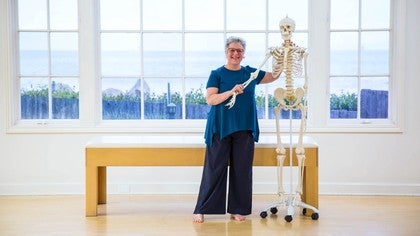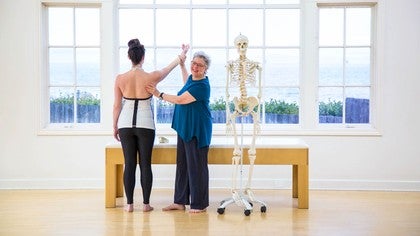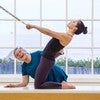Introduction #3825
What is Embodied Anatomy?
Description
About This Video
Transcript
Read Full Transcript
Hi, I'm Leslie Powell from movements of foot. I live in New York. So if you want more information about me, you can go to move into foot.com. I'm here to talk to you about embodied anatomy and embodying anatomy is can be all about any of the systems of the body and it can influence how you have your practice and your clients and teach you and your clients more about their bodies. The origins of a much of the embodied anatomy written it started with Mabel Todd. Um, and she wrote a book called the thinking body. She has influenced many people in the field.
So you have Dr Lulu Swagger. Uh, she taught a Julliard, her protege was Irene doubt who's my teacher also. There was Andre Bernard. Um, and he also influenced like Eric Franklin. Then you have other systems of like the La Institute of movement studies also where my training is Irma guard Bartanian. Um, and she worked a lot about where the bones are, which is can be a great way to teach your clients. Then other ways that the field has moved, um, is Bonnie mangers. Colin's. She also worked with, um, Erma guard, but she also developed her whole system around anatomy, movement, developmental movement.
So it's a very rich field and it can really change your practice. I remember the first time in the lab and school we were talking about, uh, understanding where the body was. And I always had an interpretation of, you know, the game of operation. You had a little tweezer and he had to try to get the Oregon out. That was my kind of perception of the body. So just think if here is the top of the lung and it feels and comes all the way down to here and comes all the way down to there.
If you think of that presence within your right side of your ribs, notice just thinking about it has changed your practice. So we're going to go through many different systems, mainly more bones and muscles. So when we talk about muscles and embodied anatomy, I don't want you to go to thinking about the maximum tone because muscles have movement to them. And I'm want you to just kind of think, and you'll see have drawings of how the lines move, where they slide long or short. And so it'll have a different sensation. And the beauty about [inaudible] is you're moving your muscles ranges of motion, concentric and eccentric contraction.
And a lot of people get lost in the, when it's essentially moving, um, and they don't feel the work and there should still be work. What's wonderful about bringing in bodied in anatomy into your practice and especially with your clients, is it can help them find different ways of queuing. And sometimes you'll have with certain clients, you work with the imagery of bones, they get it. You talk about muscles, a particular client might not get it that week. So it gives a richness to queuing and getting you to understand your body as well as your client. So I'm very excited.
We're going to be doing a tutorials about the shoulder girdle. And what I want you to think about is we're going to go through the bone rhythms. We're going to go through different muscles. I also will be bringing into applications in your [inaudible] repertory. And then I'm also going to teach a class on the theme of embodied anatomy with the shoulder girdle. So you can see how you can still create rhythm and be strong and still educated the same time.
Embodied Anatomy: Upper Body
Comments
You need to be a subscriber to post a comment.
Please Log In or Create an Account to start your free trial.















